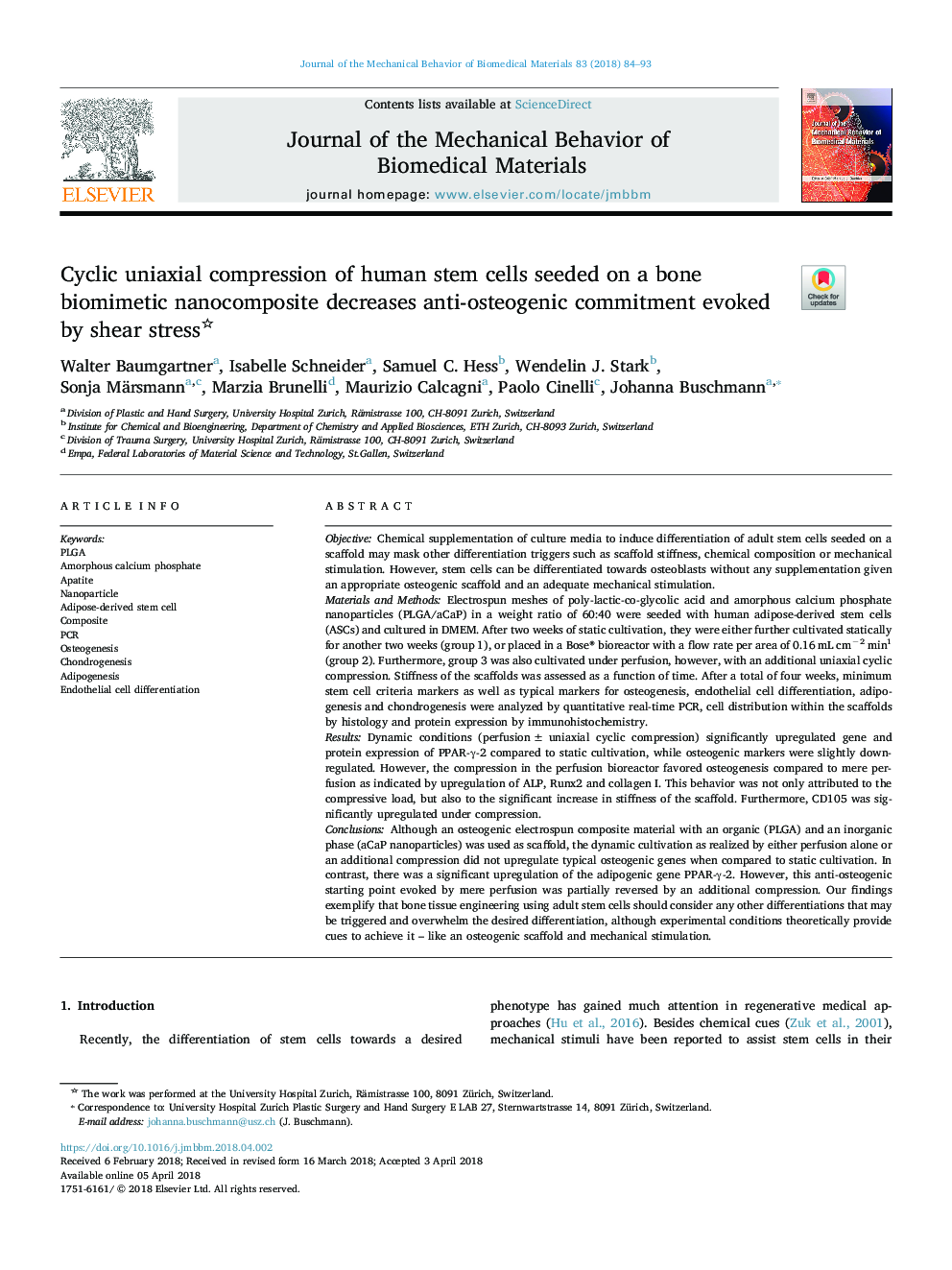| Article ID | Journal | Published Year | Pages | File Type |
|---|---|---|---|---|
| 7207011 | Journal of the Mechanical Behavior of Biomedical Materials | 2018 | 10 Pages |
Abstract
Although an osteogenic electrospun composite material with an organic (PLGA) and an inorganic phase (aCaP nanoparticles) was used as scaffold, the dynamic cultivation as realized by either perfusion alone or an additional compression did not upregulate typical osteogenic genes when compared to static cultivation. In contrast, there was a significant upregulation of the adipogenic gene PPAR-γ-2. However, this anti-osteogenic starting point evoked by mere perfusion was partially reversed by an additional compression. Our findings exemplify that bone tissue engineering using adult stem cells should consider any other differentiations that may be triggered and overwhelm the desired differentiation, although experimental conditions theoretically provide cues to achieve it - like an osteogenic scaffold and mechanical stimulation.
Keywords
Related Topics
Physical Sciences and Engineering
Engineering
Biomedical Engineering
Authors
Walter Baumgartner, Isabelle Schneider, Samuel C. Hess, Wendelin J. Stark, Sonja Märsmann, Marzia Brunelli, Maurizio Calcagni, Paolo Cinelli, Johanna Buschmann,
